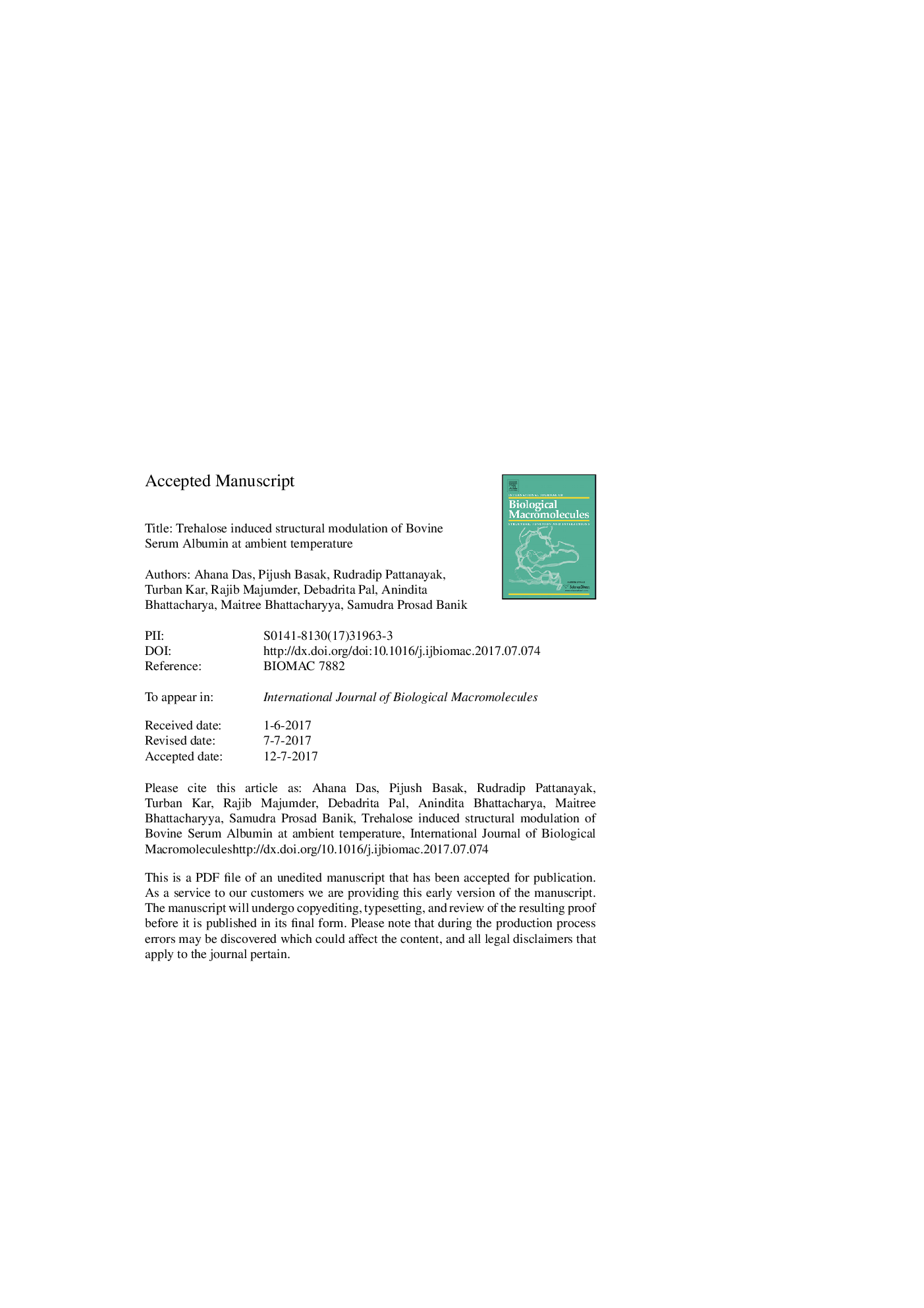| Article ID | Journal | Published Year | Pages | File Type |
|---|---|---|---|---|
| 8329545 | International Journal of Biological Macromolecules | 2017 | 37 Pages |
Abstract
Trehalose is a well-known protein stabilizing osmolyte. The present study has been designed to understand the interaction of trehalose with BSA at ambient temperature. Steady state fluorescence and life-time analysis along with CD, DLS and ITC have been employed to show that trehalose causes surface-associated structural perturbation of BSA to promote its compaction. Trehalose at 0.1Â M concentration resulted in increased solvent exposure of one of the two tryptophans of BSA with a 5Â nm redshift in emission and enhanced susceptibility to acrylamide quenching with an increase in KSV from 2.61Â Mâ1to 5.16Â Mâ1. 0.5Â M trehalose resulted in reduced accessibility of tryptophan and destabilization of ANS binding (Forster radius increased from 24Â Ã
to 27.36Â Ã
for tryptophan-ANS FRET) indicating shielding of BSA in trehalose matrix. Simultaneously, there was compaction of BSA as shown by increased alpha-helicity from 45.85% to 48.81%, decreased thioflavin-T binding and reduction in hydrodynamic radius from 9.69Â nm to 6.59Â nm. Trehalose induced solution viscosity resulted in significant decrease in binding affinity of BSA towards curcumin and resveratrol. The results are in unison with the preferential exclusion and vitrification models to explain protein stabilization by trehalose and also points at the structure-function trade-off of proteins in presence of trehalose.
Keywords
Related Topics
Life Sciences
Biochemistry, Genetics and Molecular Biology
Biochemistry
Authors
Ahana Das, Pijush Basak, Rudradip Pattanayak, Turban Kar, Rajib Majumder, Debadrita Pal, Anindita Bhattacharya, Maitree Bhattacharyya, Samudra Prosad Banik,
